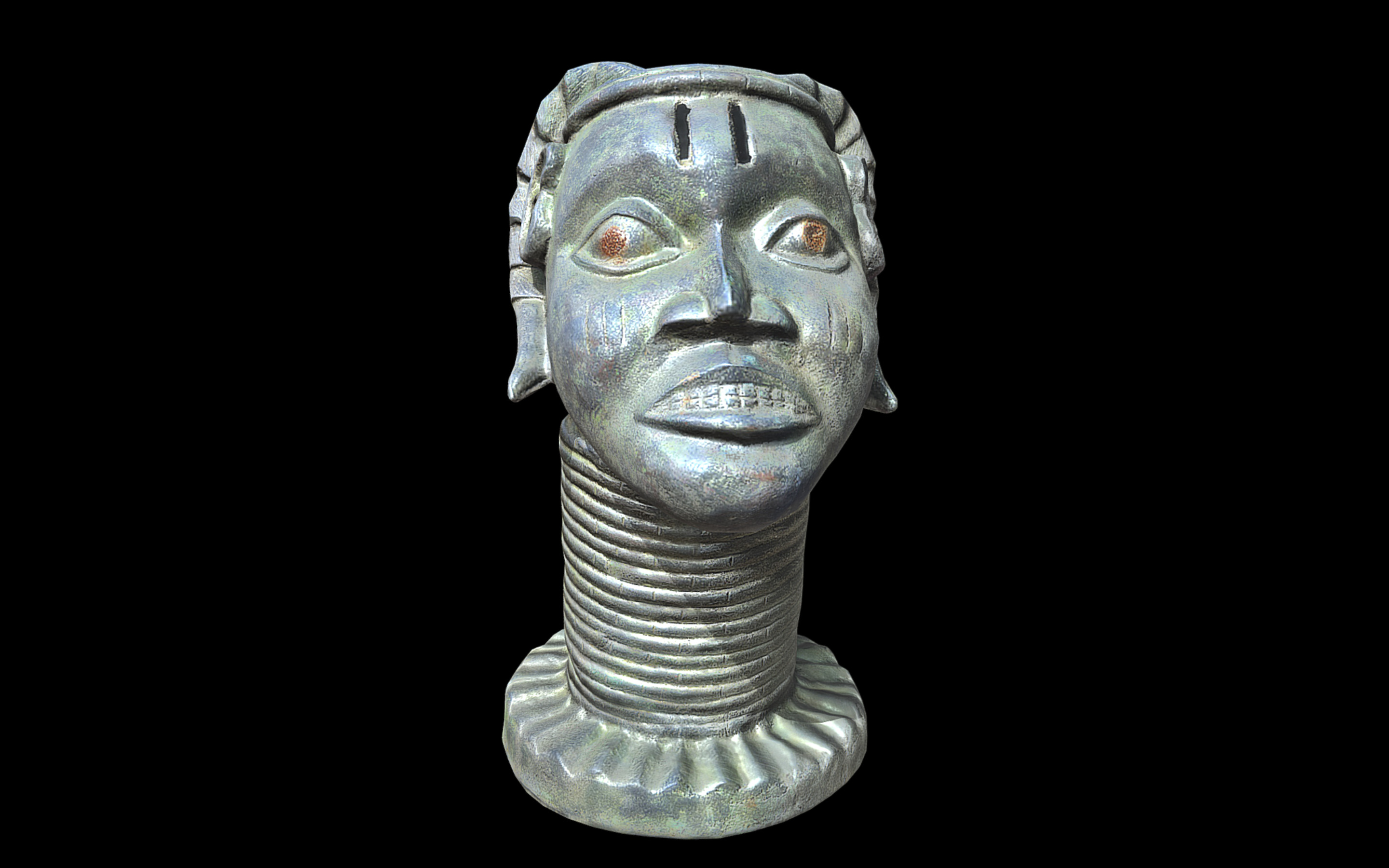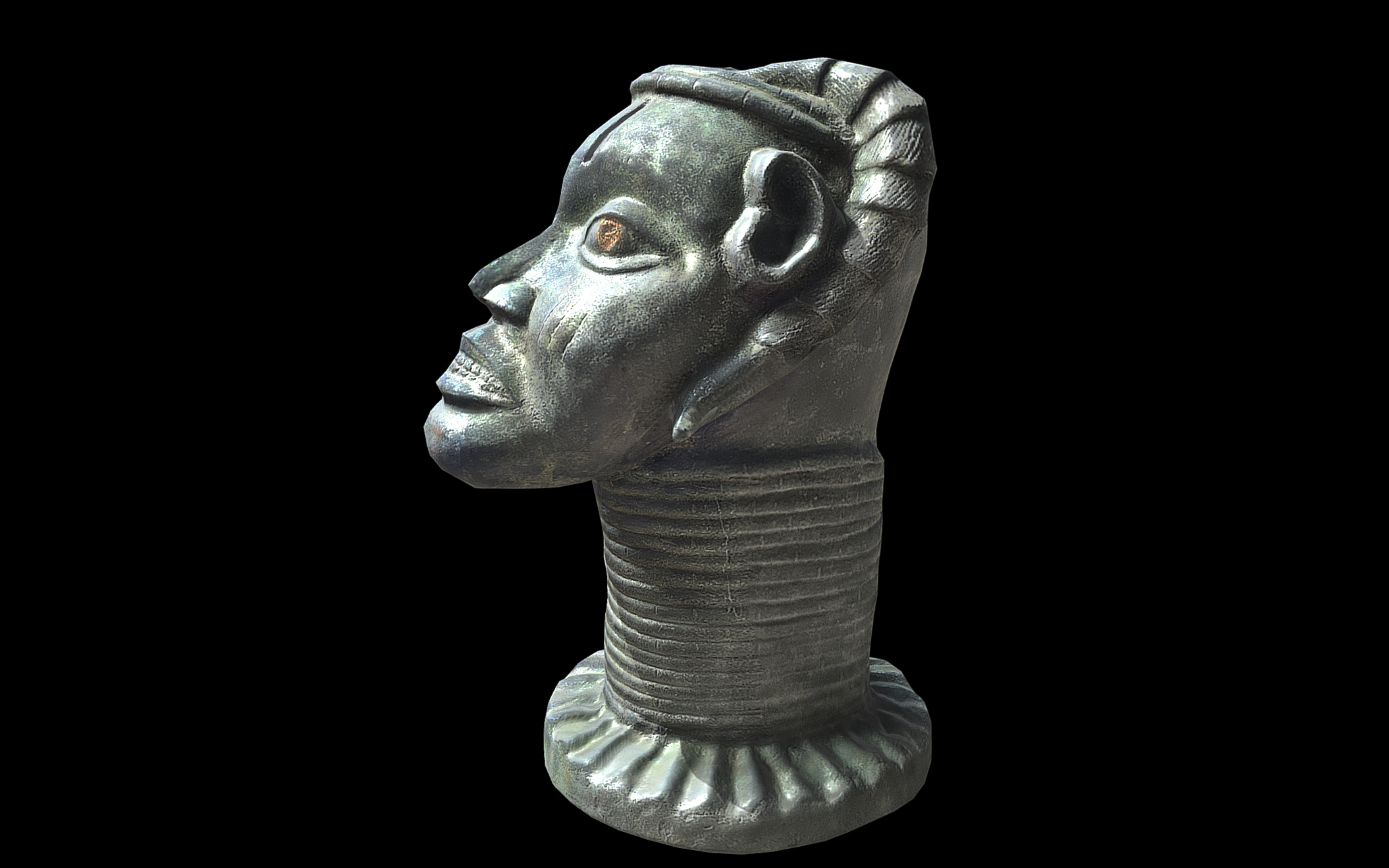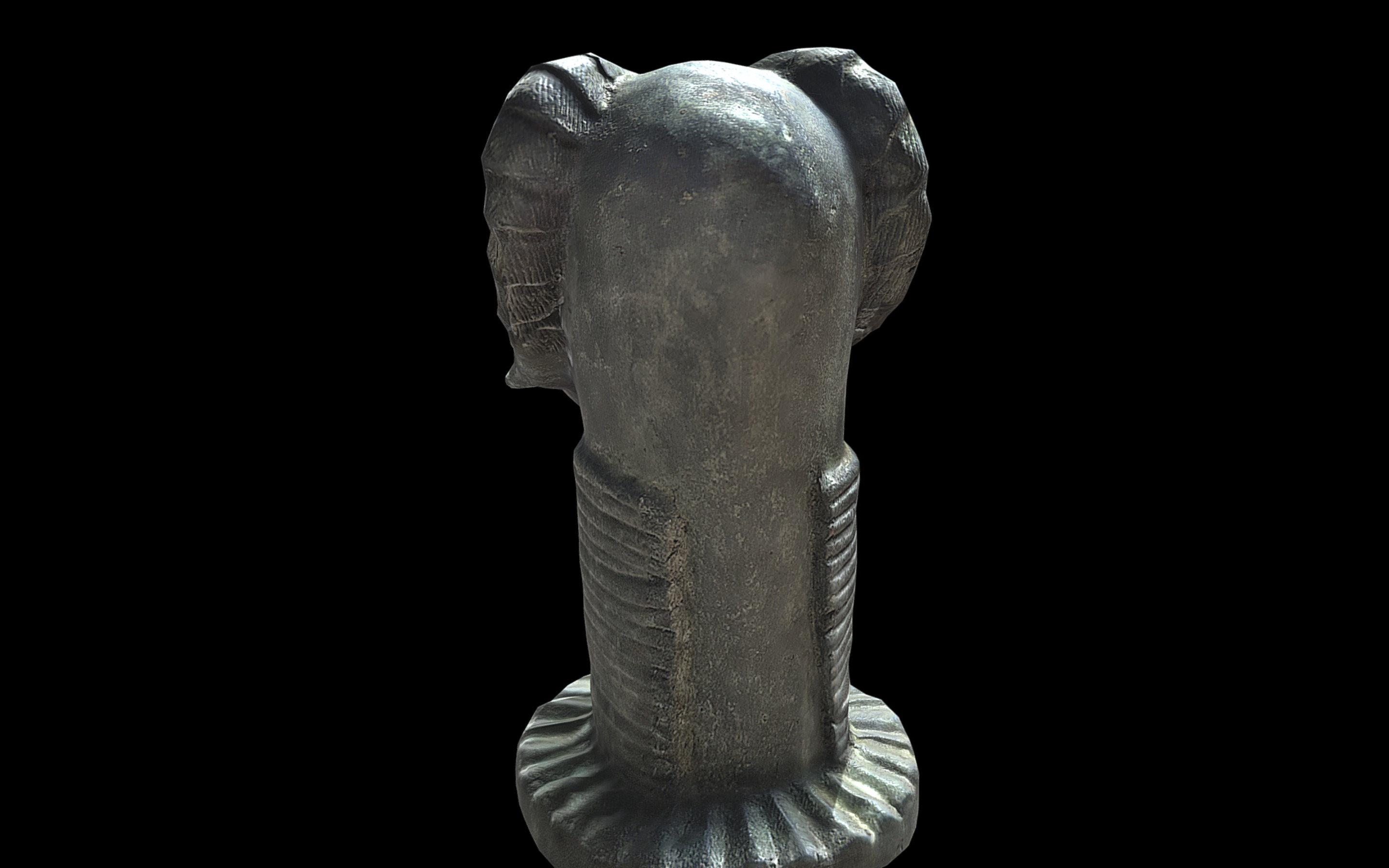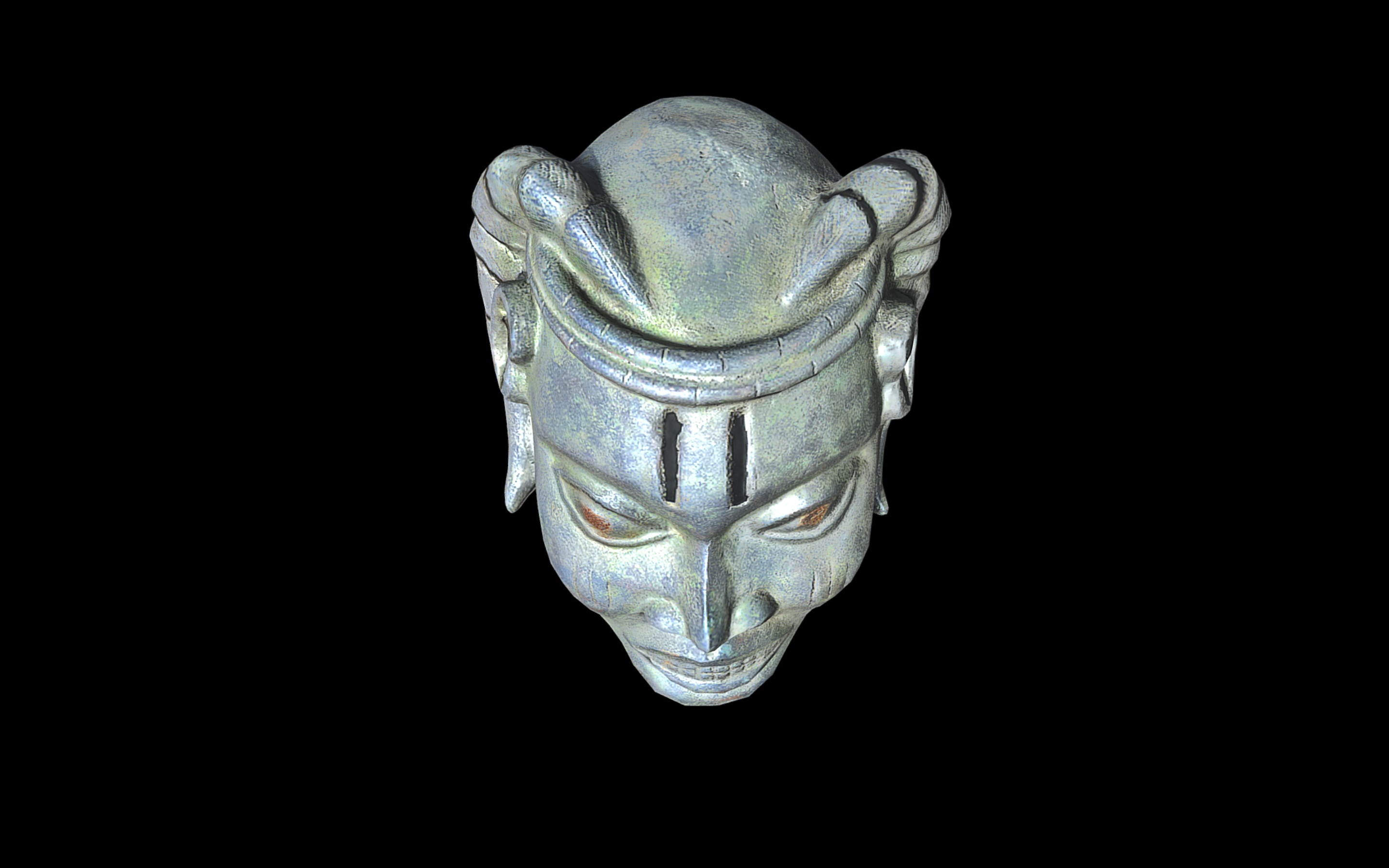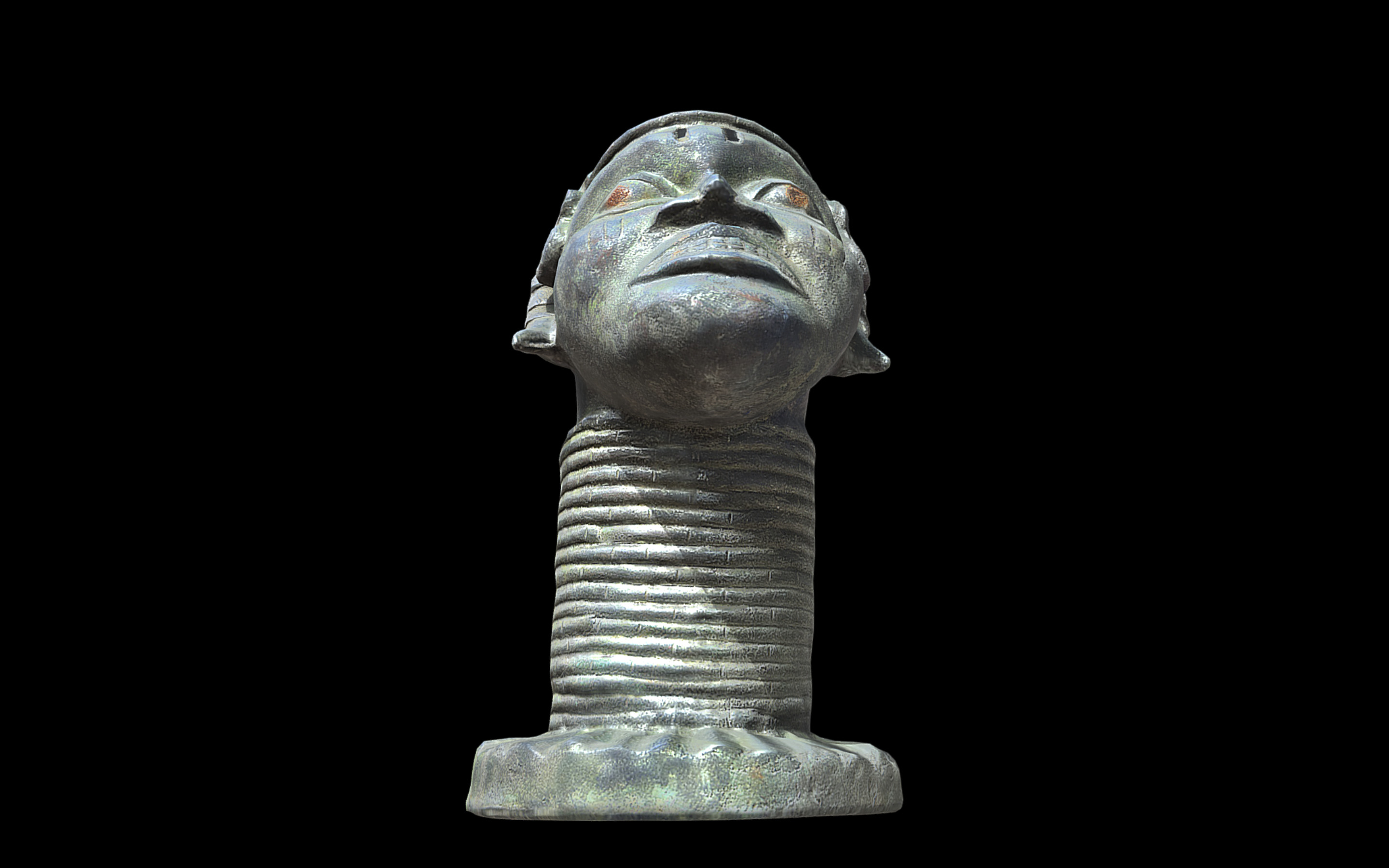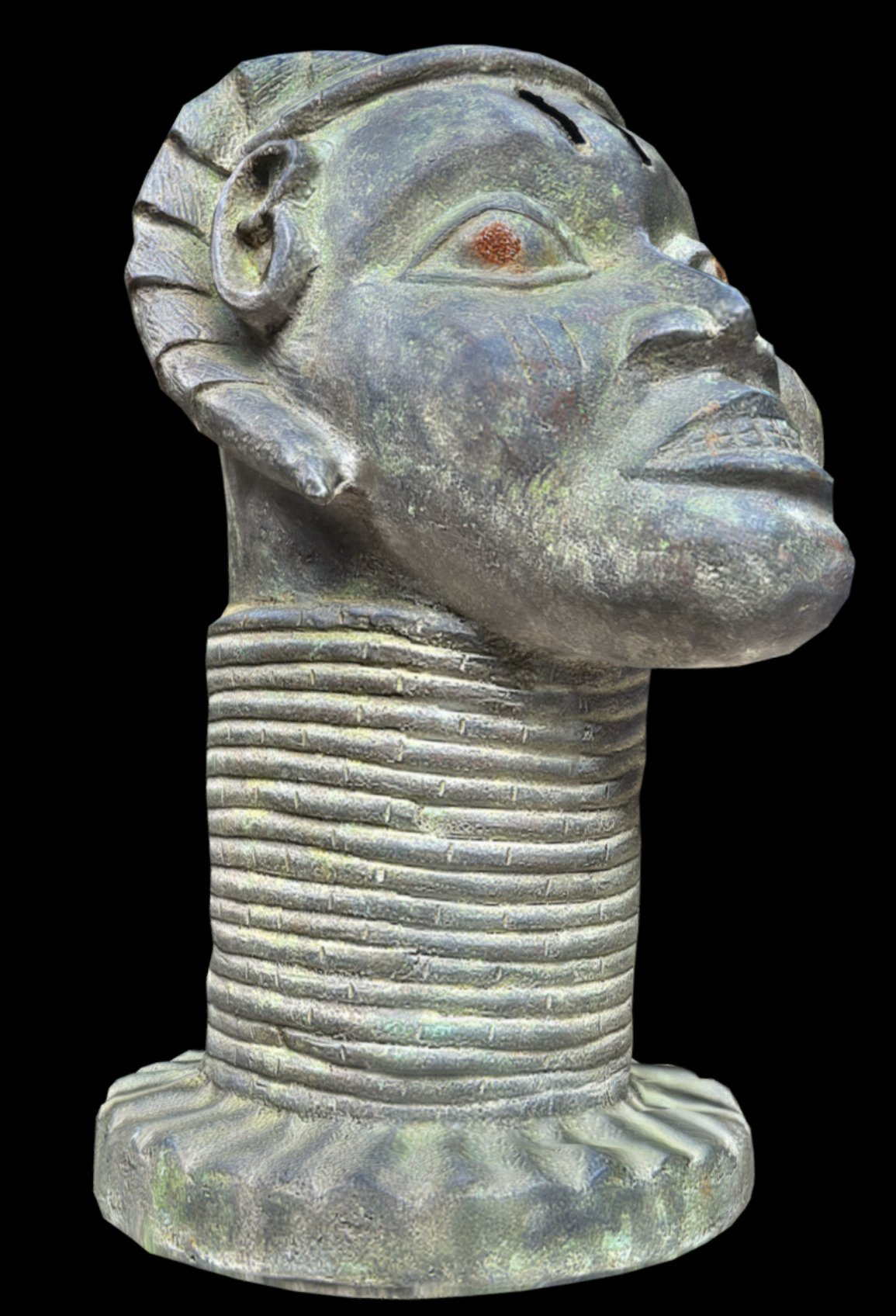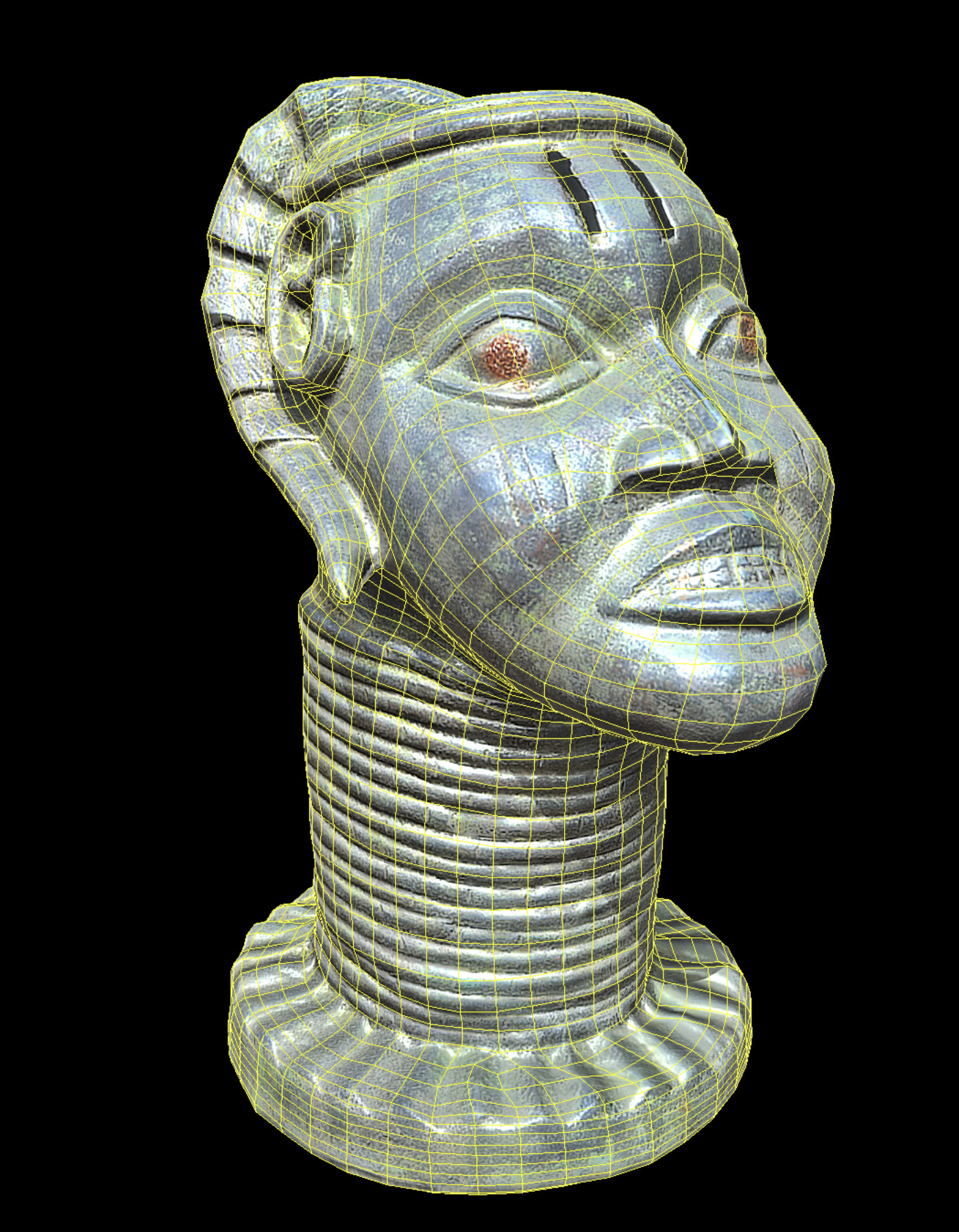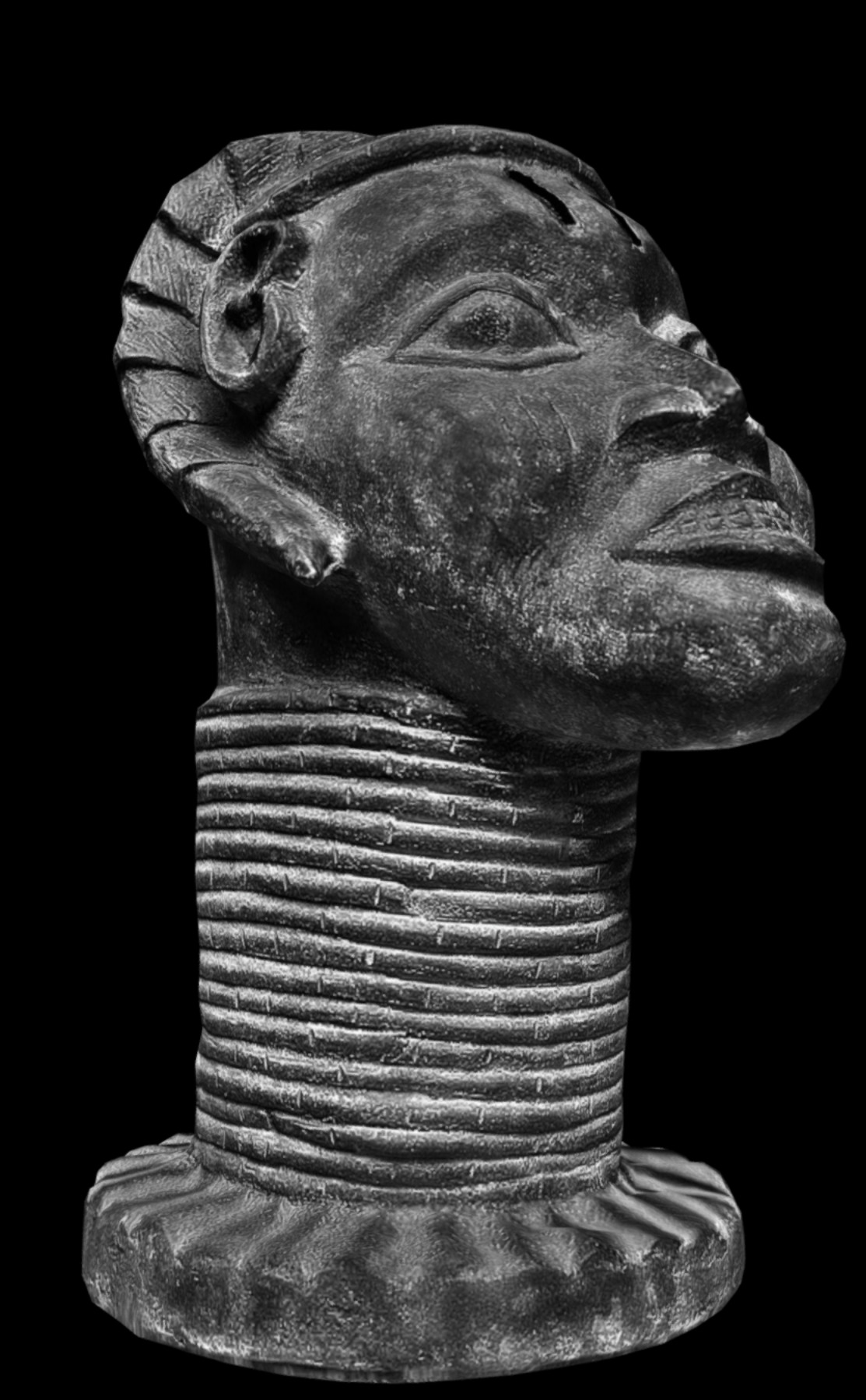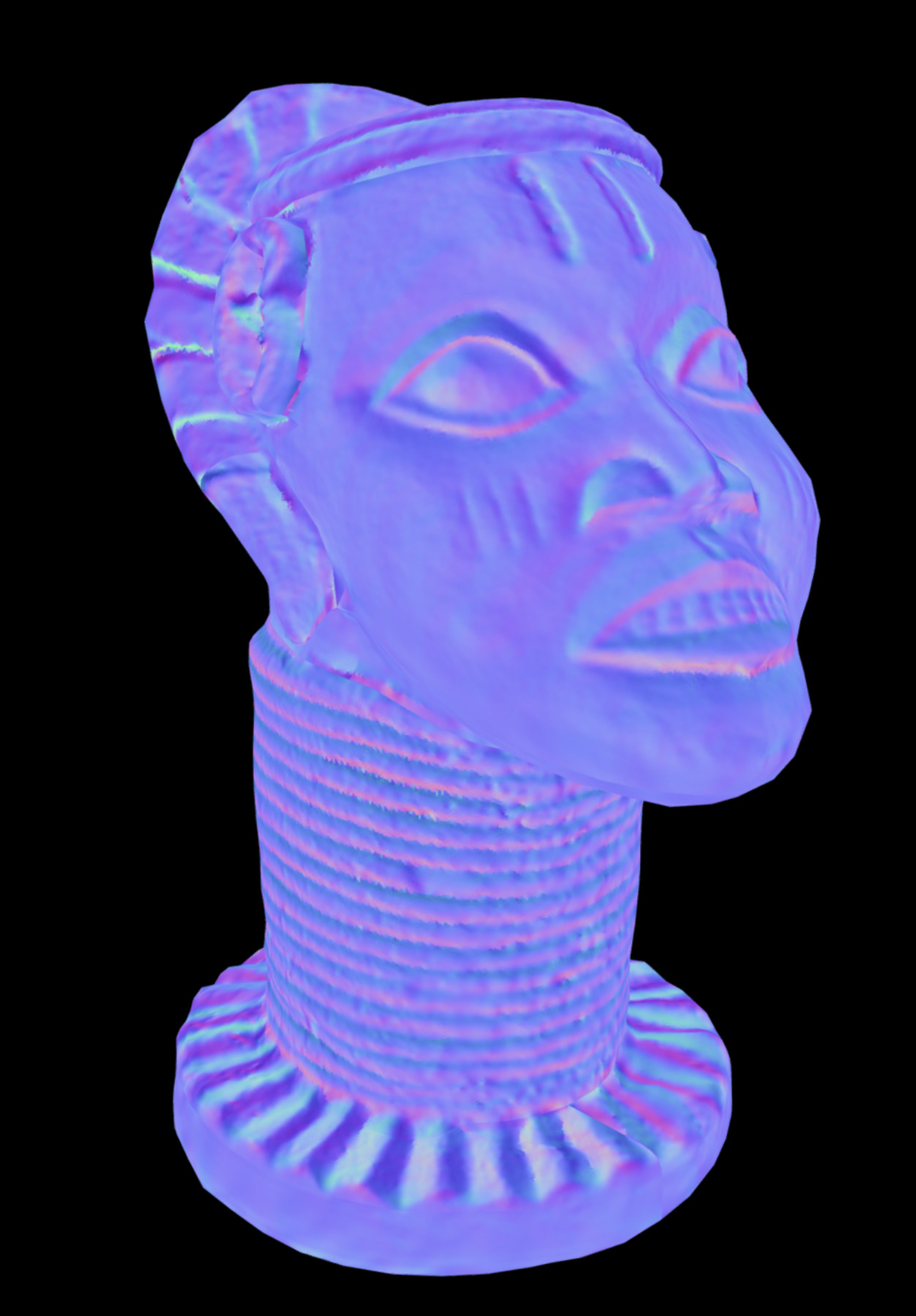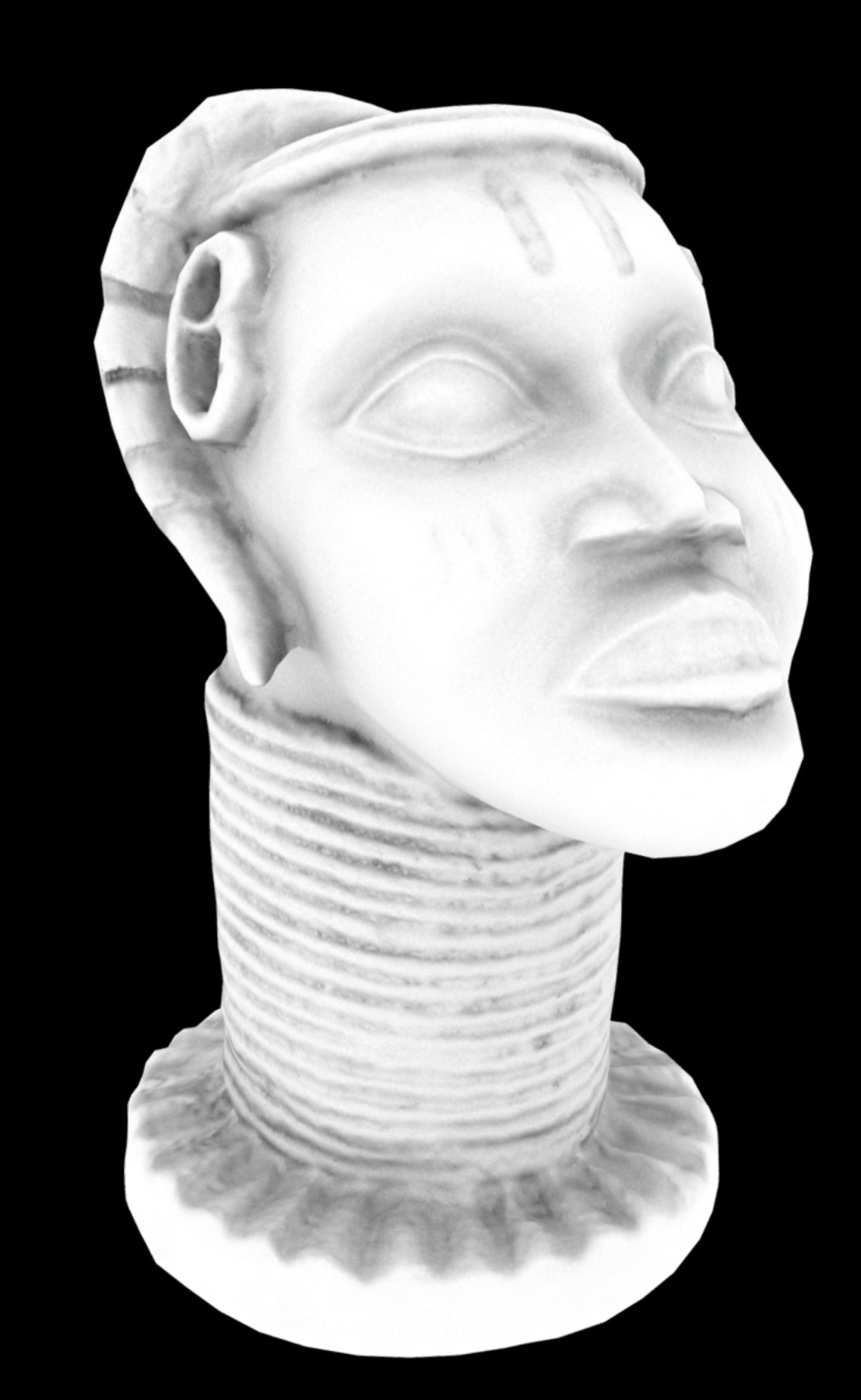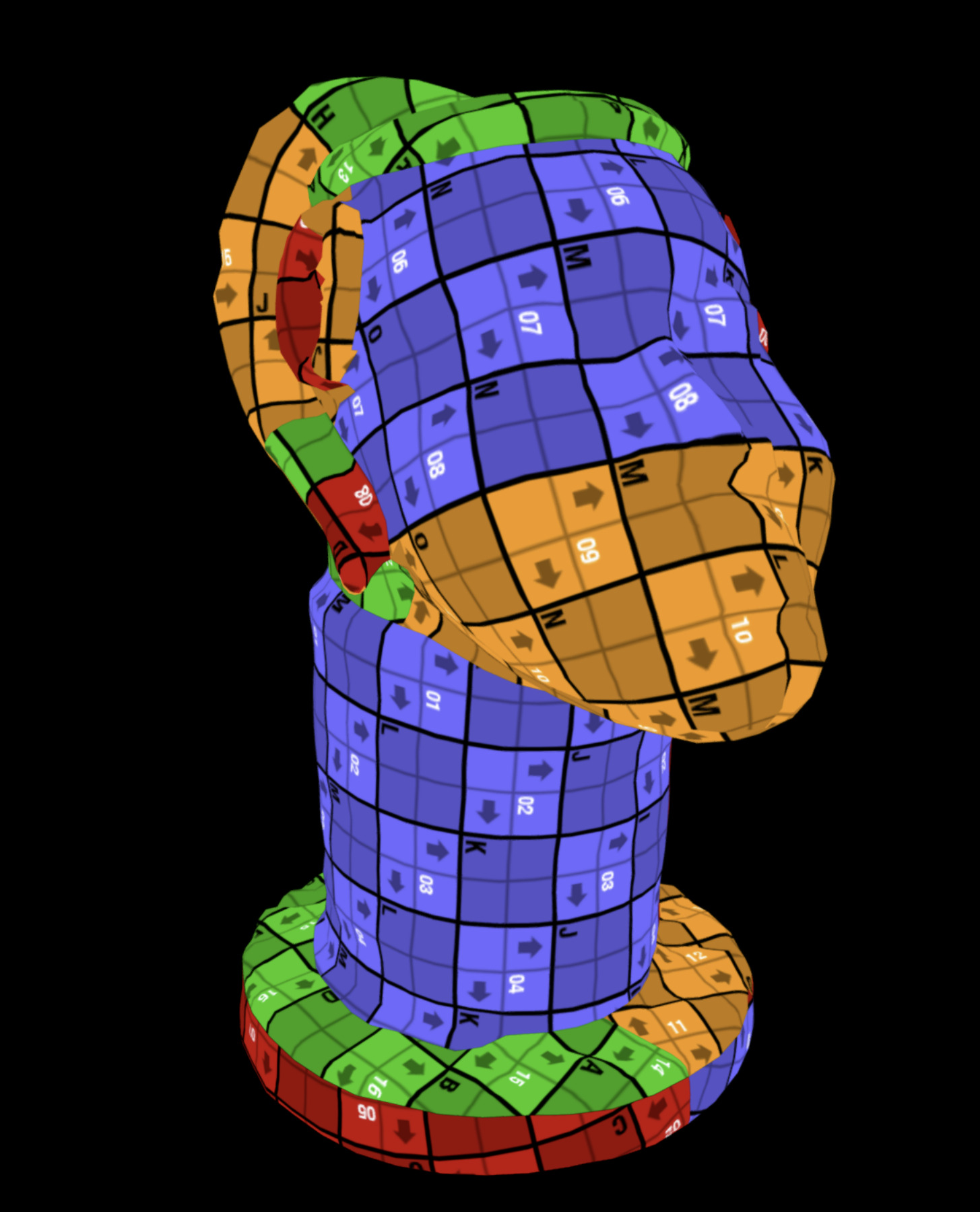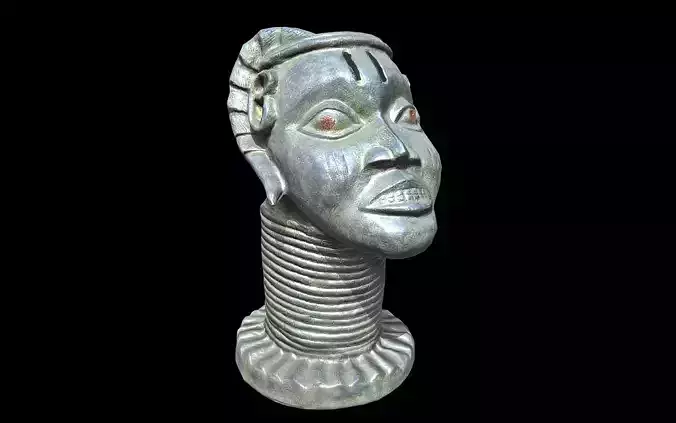
Yoruba-Owo Osanmasinmi Altar Head Low-poly 3D model
Yoruba-Owo Osanmasinmi Altar HeadLate 19th to early 20th centuryOwo, NigeriaBronze
This bronze sculpture, known as an Osanmasinmi—meaning ram's head in the Yoruba language—originates from the Owo region of southwestern Nigeria. Crafted using the lost-wax casting technique, the piece reflects a synthesis of artistic influences from neighboring cultures, notably the Benin Kingdom, highlighting the interconnectedness of regional artistic traditions.
The Osanmasinmi features a stylized representation of a ram's head, complete with curved horns and detailed facial features. In Yoruba culture, the ram symbolizes strength, vigilance, and protective aggression, attributes that made it an apt metaphor for ancestors who are revered for their guidance and protection.
Such objects were traditionally placed on ancestral altars (ojúpọ̀) of high-ranking individuals, such as the Olowo (king), Ojomo, and other prominent chiefs. These altars served as sites for communication with deified ancestors, particularly during significant rituals like the annual new yam harvest.
Source: Omorogbe, Aigbe. ,Yoruba-Owo Osanmasinmi Altar Head, Bronze-cast(lost-wax), Private collection, Benin city
HIGHPOLY MODEL INCLUDED.
_NOTE: HIGH-POLYGON MODEL
In addition to being optimized for VR, AR, and game development, our models are also available in high-polygon versions—making them excellent base assets for 3D printing.
Our high-poly models come as cleaned, watertight FBX files with all mesh artifacts removed, making them ideal for high-quality physical reproduction.
To 3D print these models, you’ll need to convert the FBX file to STL
format, which is a standard step in the printing workflow. This can be done easily using software like Blender, MeshLab, or Autodesk Meshmixer.
Once converted, the model is ready for slicing and printing with your preferred settings and printer._

